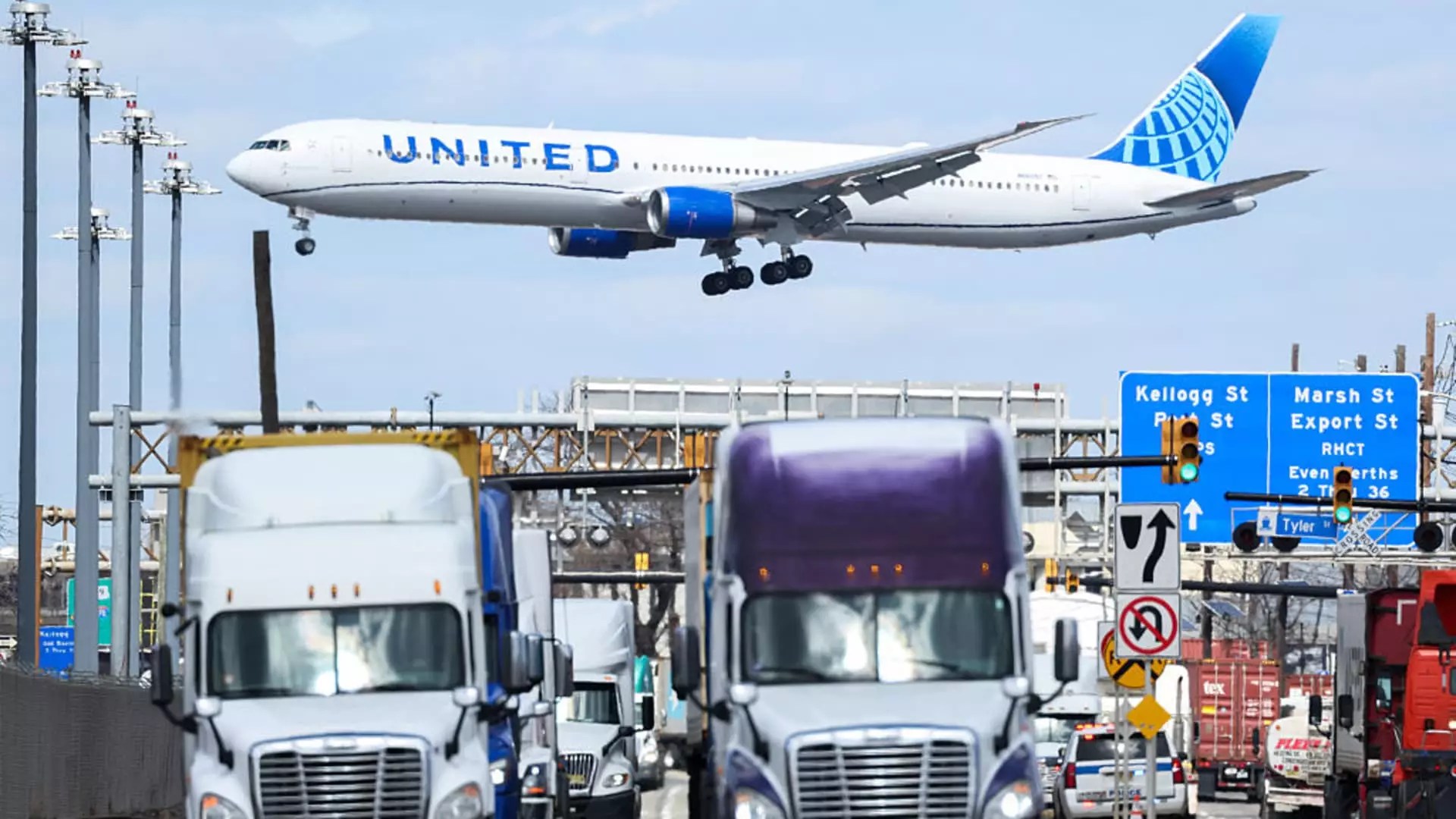In today’s business climate, predicting economic conditions can sometimes feel like trying to chart a comet’s trajectory. United Airlines recently maintained its full-year forecasts while presenting a secondary scenario should the United States succumb to an economic downturn. This dual approach demonstrates a commendable flexibility in their strategic planning, yet it also basks in somewhat of a chaotic unpredictability felt across various industries. The airline emphasized the paradox that while they have stable booking trends, the entire economic landscape remains “impossible to predict.” In an age of economic volatility exacerbated by political strife, such acknowledgments might offer cold comfort to investors.
Profitability: A Bright Spot?
Despite the murky waters ahead, United Airlines is counting on profitability, forecasting adjusted earnings per share to range from $11.50 to $13.50. However, the truth is that this generous outlook feels more like hopeful optimism than grounded realism. In the event of a recession, they project earnings could drop to between $7 and $9 per share. The contrasting figures paint a picture of resilience but also risk. The reality is simple: the airline industry thrives on consumer confidence, which can wane rapidly during economic slowdowns. That said, the reported $387 million profit in the first quarter, a pivot from last year’s loss, is nothing short of a narrative twist worth pondering.
Capacity Adjustments: A Response to Demand
In an astute yet cautious maneuver, United Airlines has opted to cut domestic flights by around 4% this summer to adjust for disappointing domestic travel numbers. This is a prudent financial strategy aimed at aligning resources with demand while protecting margins. Meanwhile, the rising demand for international travel suggests a robust willingness among certain consumer segments to splurge a bit more. It highlights the diverging patterns of consumer behavior: while the economy teeters on instability, segments of the population continue to demonstrate resilience, often spending more on luxury.
Stability in the Premium Sector
Reflecting a significant trend within the industry, United Airlines reported a 17% increase in premium cabin bookings. This discrepancy signals clear segmentation in consumer behavior. High-income travelers appear to have insulation against economic downturns and are still inclined to prioritize comfort in their travels. This segregated growth needs to resonate with the prevailing discussion around wealth inequality, exacerbating the gap between the wealthy and everyday consumers who often turn to cost-saving measures like budget airlines.
Competitive Landscape: Navigating Rivalries
While United stands tall on the profit report, it faces fierce competition from carriers like Delta Air Lines. Delta’s inability to reaffirm its full-year guidance reflects a wider uncertainty gripping the industry—an industry that thrives on strategic growth and consumer faith. United affirmatively points to a multi-year plan that emphasizes resilience. Still, it remains to be seen if such strategies can ultimately withstand any serious economic shocks—especially if competitors like Delta shift positions more adeptly within their market frameworks.
Investor Sentiment: A Double-Edged Sword
United’s financial narrative presents a curious case for investors. After-hours trading indicated a surge of over 5% in United’s shares, hinting at investor confidence. But, such confidence raises questions: is this buoyancy based on sound fundamentals or mere speculation in the face of an economic rollercoaster? Investors must scrutinize United’s performance critically, especially when market dynamics can shift drastically based on elements outside the airline’s control—such as fluctuations in oil prices, geopolitical tensions, and consumer sentiment.
The Final Verdict: A Cautious Optimism
In analyzing United Airlines’ current trajectory amid whispers of recession and evolving consumer patterns, a nuanced interpretation emerges. Yes, there are glimmers of resilience—solid profit figures, astute operational decisions, and strength in premium bookings. However, the unpredictable economic environment casts a long shadow of caution. This scenario exemplifies the delicate balance companies like United must maintain: harnessing potential while remaining vigilant for the inevitable economic squalls, all while navigating through the complexities of consumer behavior and market dynamics. The road ahead may be fraught with uncertainty, but if United can successfully manage the choppy waters, it may well emerge as a leader even in testing times.


Leave a Reply